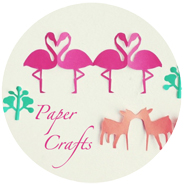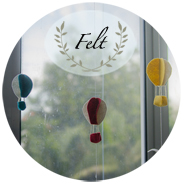**Prior to starting these activities, do read about how your child can learn Math through a developmental sequence.
The concept of exploration will give children concrete experiences to learn about the attributes and properties of materials.
When items used in teaching the child have meaningful context, the child is provided with inferences about math in his/her own world, and it will appeal to the child’s sense of curiosity. These activities will provide the opportunities for the child to use their five senses of taste, touch, smell, hearing and sight, which are also introductory concepts of science.
Here are the Recommended Picture Book titles that you can use to teach your child the concept of Exploration in Math :

Activities :
1) Water / Sand Play

Materials :
- water/sand table or you can use a large plastic tub
- assorted containers, funnels, scoops, spoons, measuring cups, strainers
Activity :
- Encourage the child to explore the characteristics of sand/water using the variety of materials
Words to use : wet or dry, liquid or solid
2) Paints
Materials :
- paper, wide and narrow paint brushes
- paints
Activity :
- Place wide and narrow paint brushes on the table to use, as the child paints
- Ask the child to describe the different brush strokes
- Try it with thick and thin paints
Words to use : thick OR thin
3) Making music
Materials :
- rhythm instruments like drums, triangle, tambourine
Activity :
- Get the child to play on the instrument and describe what they hear.
Words to use : Loud or Soft, High or Low
4) Scratch and Sniff
Materials :
- Paper, Paint
- Strawberry, orange, pandan and lemon extracts
Activity :
- Mix 1/2 a teaspoon of extract with specific coloured paints; red, orange, green and yellow
- Let the child paint on the paper
- When the painting is dry, let the child scratch the paint and smell them
- Ask him to describe how it smells like.
5) Hot and cold

Materials :
- 4-6 Coins
Activity :
- Ask the child to place the coins in an air conditioned room, in their pocket, near a sunny place, in the fridge and other hot and cool places
- After a few minutes, let the child touch the coins and describe what they feel.
Words to use : Hot or Cold
6) Making Jelly
Materials :
- Jelly mix
- Various shapes of containers
Activity :
- Prepare the jelly mix according to the instructions on pack
- Transfer mix into a plastic jug.
- Still warm (but not hot), guide your child to pour the mix into the container
- Bring the liquid state of the jelly mix to his attention
- Chill the jelly mix in the fridge, once the jelly is ready, highlight the state of the chilled jelly.
Words to use : Liquid or Solid
Note : You can also do this with water and ice, however jelly makes the activity more enjoyable for the child.
My Experience (when K was 2.5 years old) :
All three recommended books above were used to teach K to listen to and visually identify the different animals featured in the book (Brown Bear, Brown Bear, What Do You See?) , notice the similarites(Little Blue and Little Yellow)
, notice the similarites(Little Blue and Little Yellow) and learn to associate the distinctive animal part with the specific animal (The Mixed-Up Chameleon)
and learn to associate the distinctive animal part with the specific animal (The Mixed-Up Chameleon)
These books effectively bridged the concept of exploration with the activities and enhanced K’s interest in the materials used. The first activity of sand/water play garnered the most interest from him, since it was relatively open ended. I could easily introduce other attributes of the material, such as simple volume, weight and measurement concepts. This activity further provided opportunities for pretend play.
Amongst the activities that we explored, we spent the most time in water/sand play. As we progress further with our series in Hands on Math, you will find that the sand/water medium is a very versatile activity that can be used to teach numerous math concepts.
The rest of the activities were slowly explored the next subsequent days. They were easily implemented and K grasped the concepts and new vocabulary quickly. By the end of the week, I noticed that he these new words were added to his vocabulary and he could easily demonstrate his understanding of the concepts when asked.
———-
Next on the series on Hands on Math, will be the concept of Spatial Relationships.
For more articles on Home-Learning, go to the directory of Learning articles on this blog.




















This is great! Clear and insightful post. Will be sharing on my GH fb. Your trivia- is NOT trivial for sure…lol.
Rachel Reply:
February 3rd, 2015 at 4:58 pm
Thanks for sharing this Angie